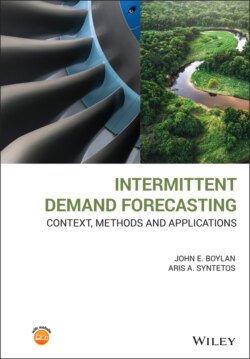Читать книгу Intermittent Demand Forecasting - John E. Boylan - Страница 44
2.4 Inventory Control Requirements
ОглавлениеAssuming that it is cost beneficial to keep replenishing a particular item in stock, the next important decision relates to how much to keep in stock for that item. Stock levels depend on the size of replenishment orders and how often these orders are placed on the supplier(s). Raising an order is not cost free. Therefore, in addition to the costs previously discussed, of holding inventories and the cost of running out of inventories, another cost factor comes into the equation, that of ordering inventories, as shown in Eq. (2.2).
(2.2)
The ordering cost is usually a fixed cost per order, reflecting such things as raising invoices, cost of the personnel working in relevant organisational departments (e.g. purchasing, supplier management), and transportation and logistics costs, depending on whether customers, suppliers, or both assume such expenses. The true ordering costs sometimes depend on the size of the replenishment orders. For example, if logistics and transportation costs are shared between customers and suppliers, then a large order would attract a higher cost than a smaller one. However, these costs are customarily assumed fixed for modelling purposes.
Different stock control policies balance ordering, holding, and backorder costs in different ways, depending on the priorities and constraints set in the system, resulting in different decisions as to how much to stock and how often to replenish. The policies most relevant to managing intermittent demand inventories are discussed in Section 2.5. In this section, we focus on two precursors of the operation of any policy, namely:
1 How often an accurate indication is available of the stock levels for a particular item (which depends on how the stock status is maintained).
2 How often a test for reordering is made, to determine whether an order should be placed or not.
These issues constitute fundamental decisions in inventory management, and are integral to the selection of an appropriate stock rule.
